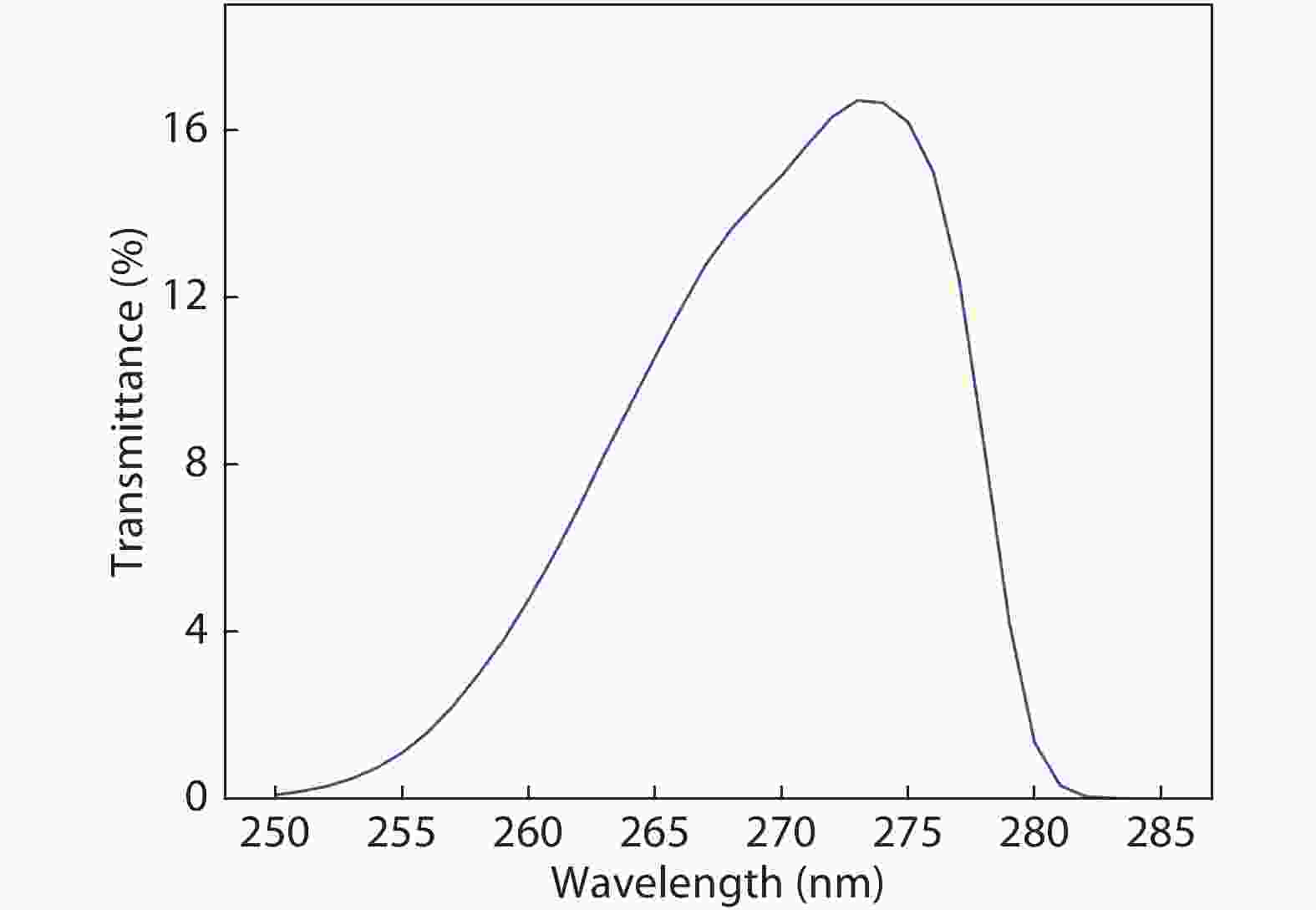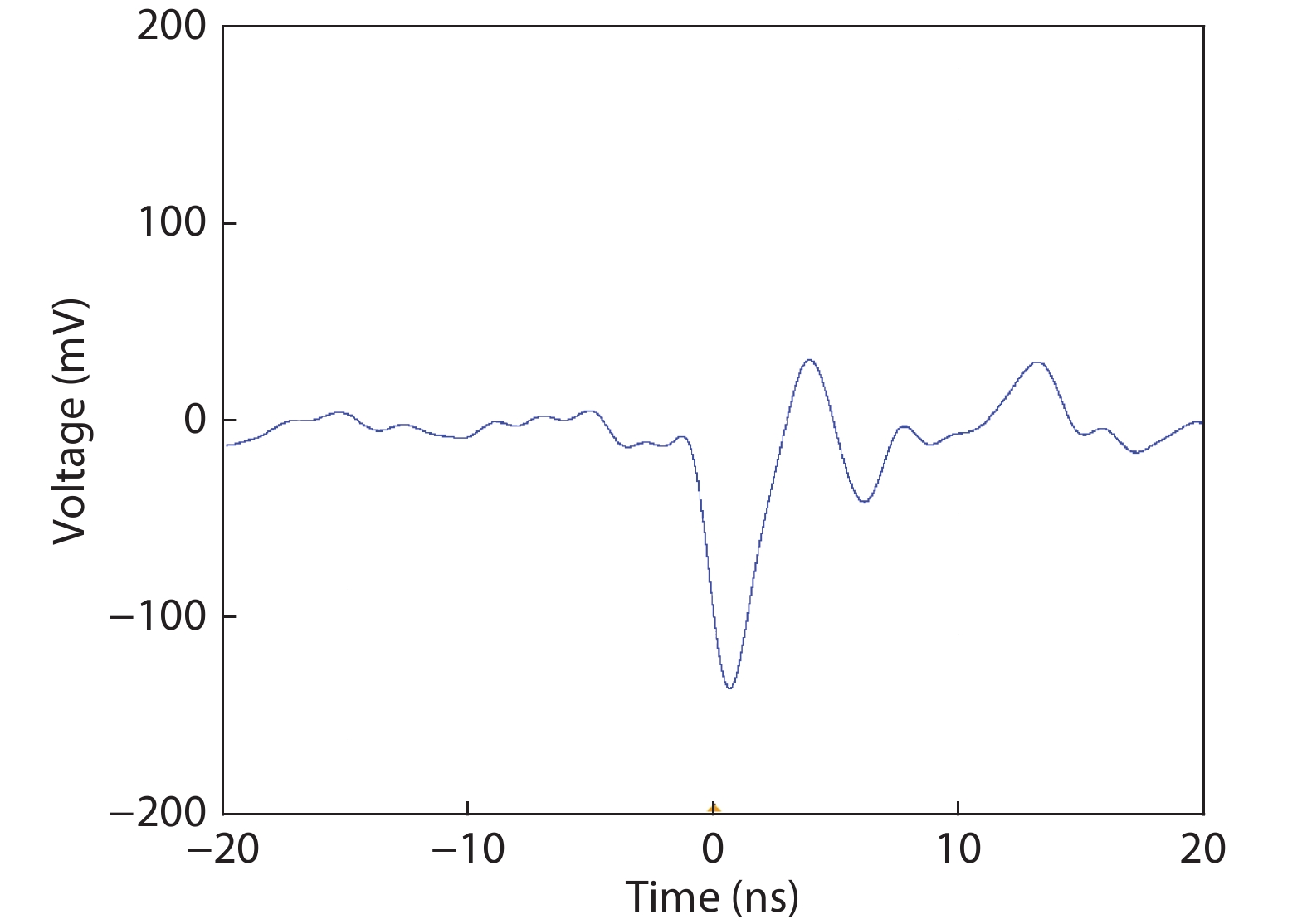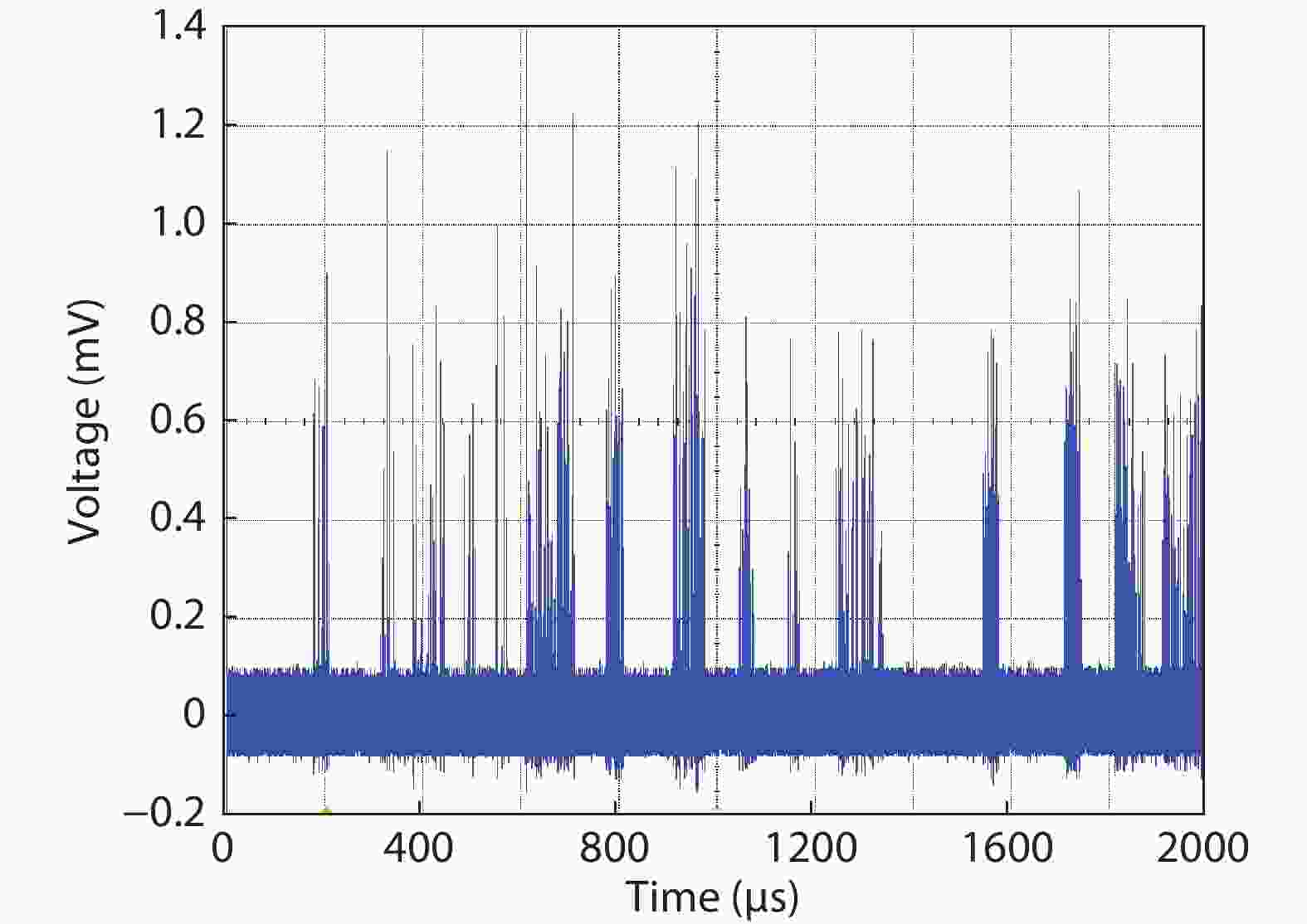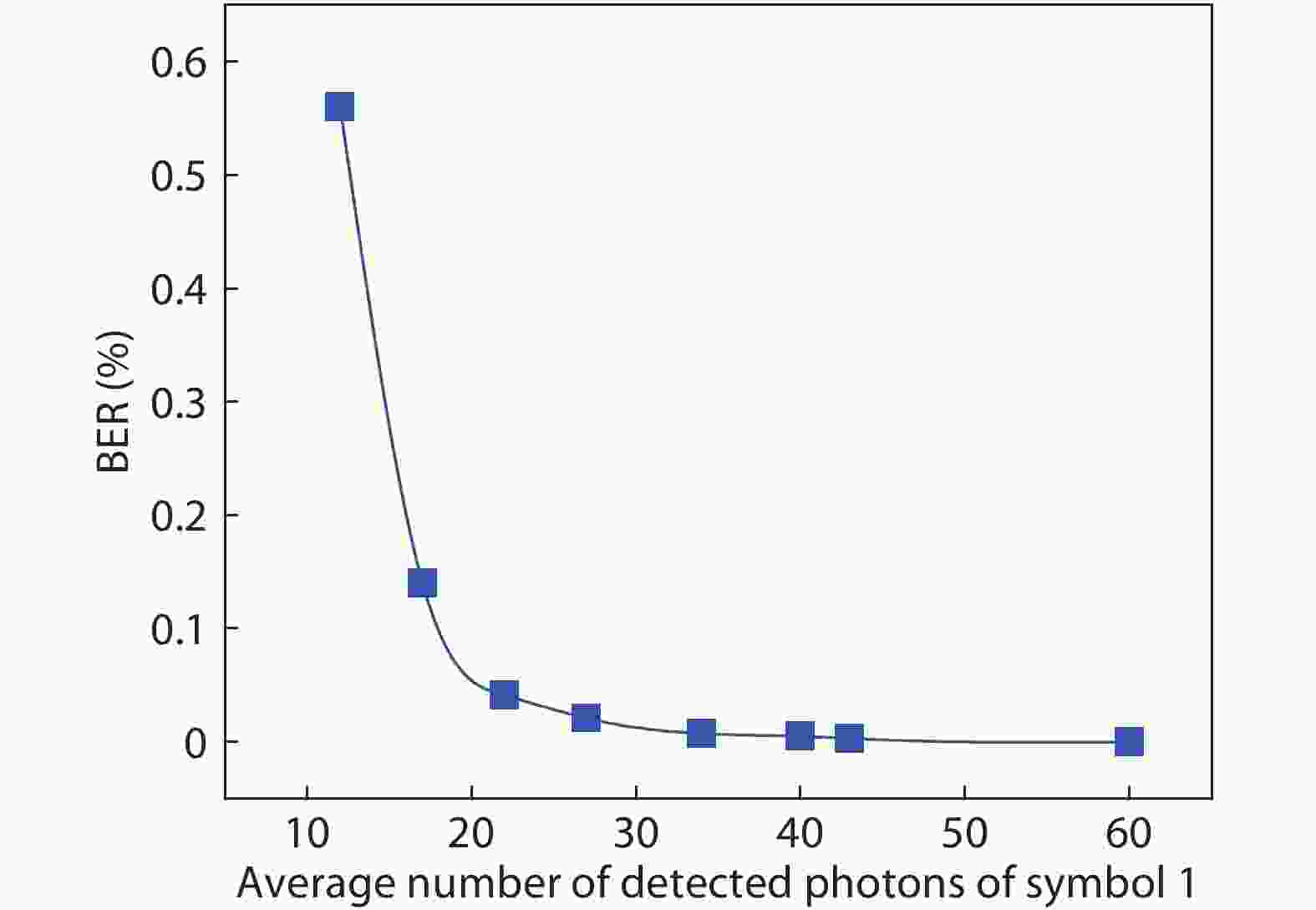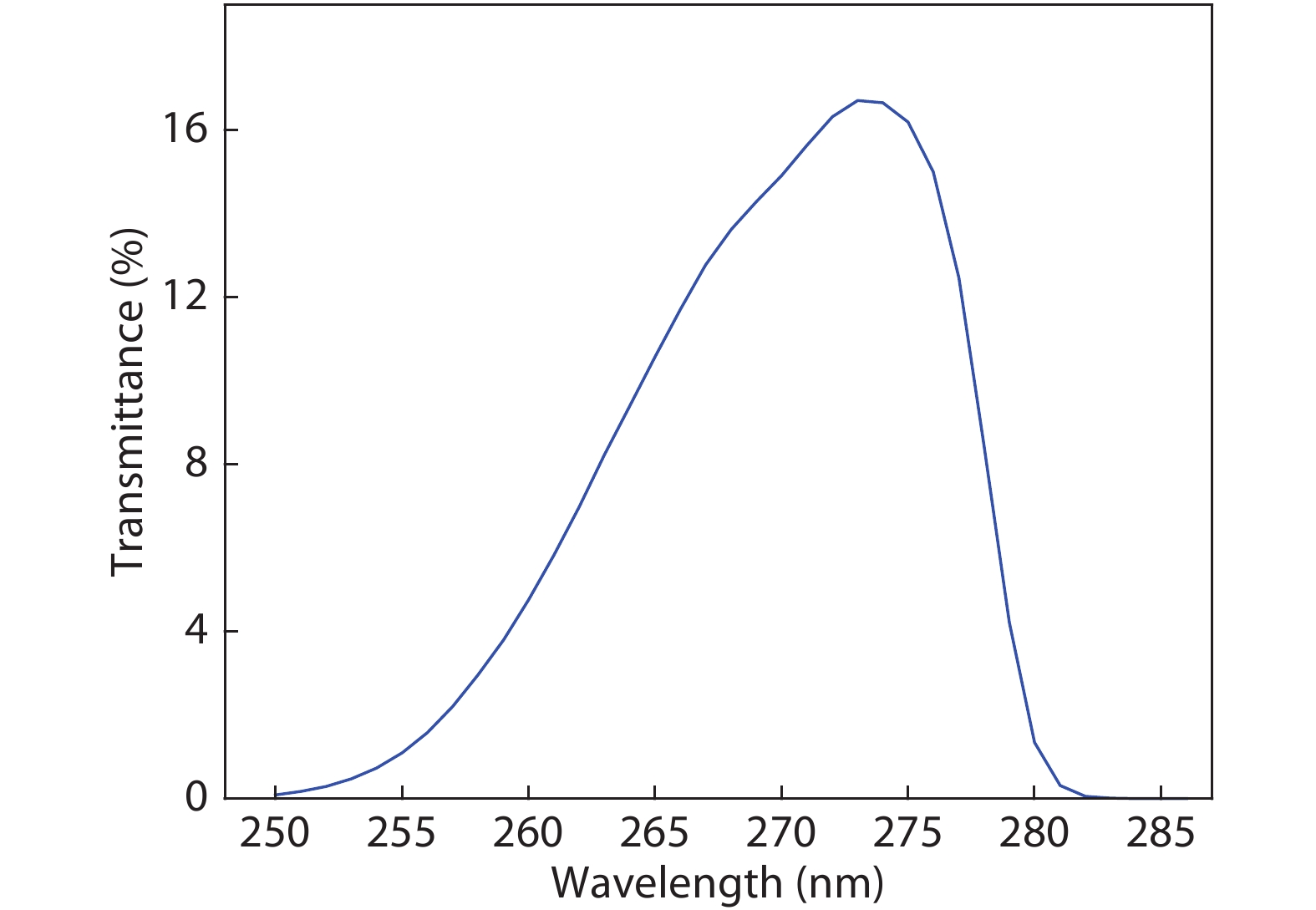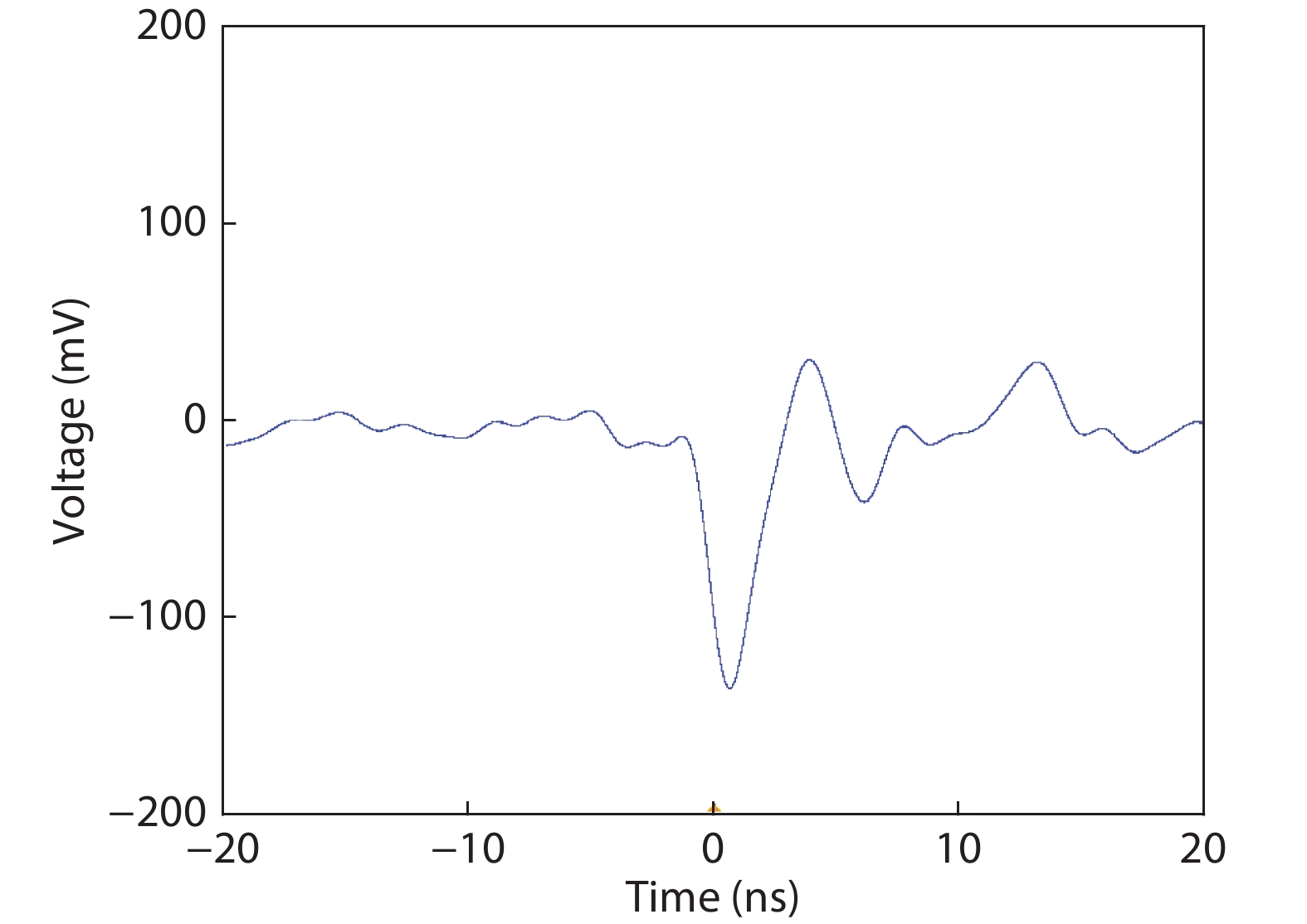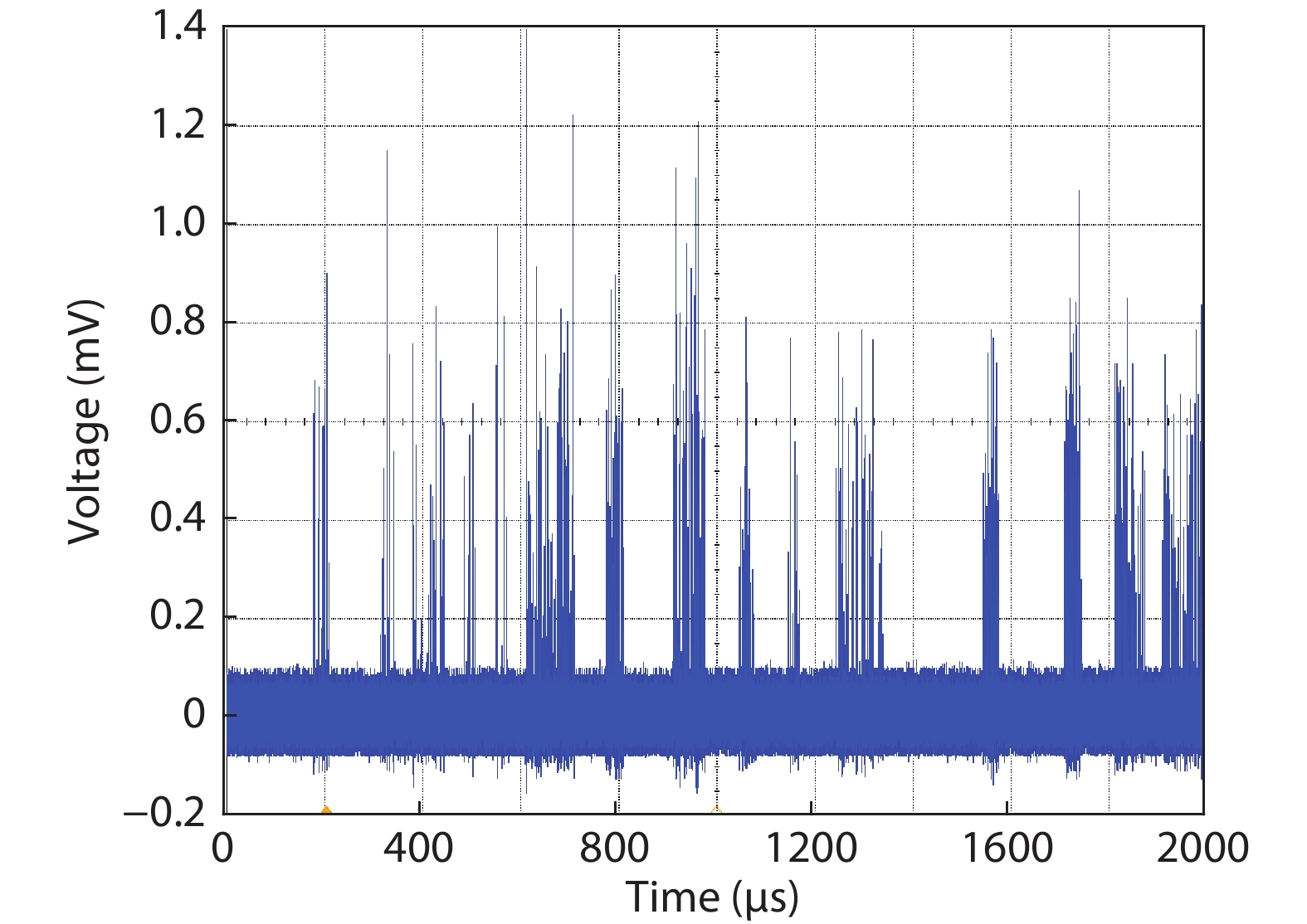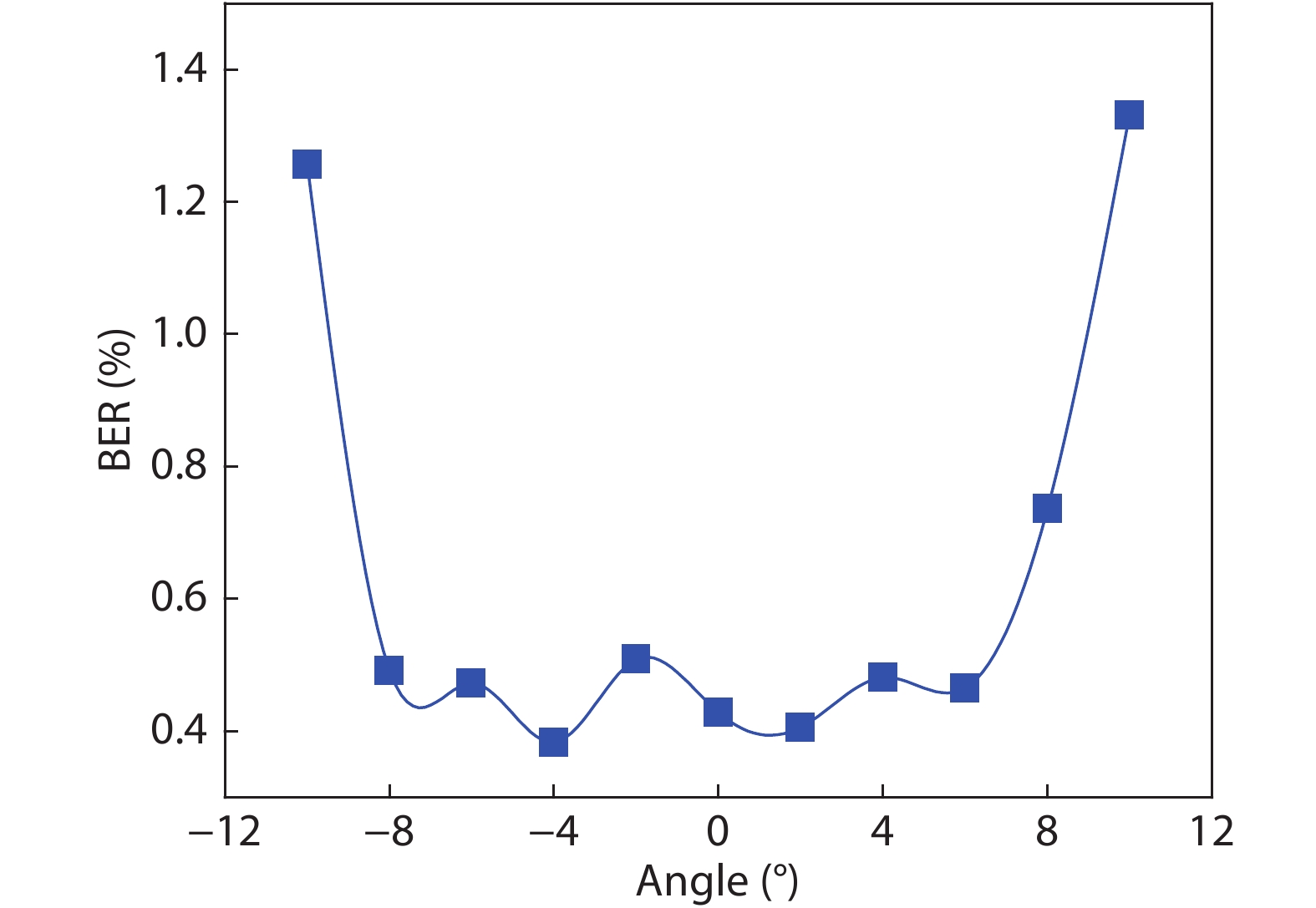| Citation: |
Yangyang Deng, Yuehui Wang, Yiqing Zhang, Axin Du, Jianguo Liu. The realization of a wide-angle voice transmission non-line-of-sight ultraviolet communication system[J]. Journal of Semiconductors, 2021, 42(9): 092301. doi: 10.1088/1674-4926/42/9/092301
Y Y Deng, Y H Wang, Y Q Zhang, A X Du, J G Liu, The realization of a wide-angle voice transmission non-line-of-sight ultraviolet communication system[J]. J. Semicond., 2021, 42(9): 092301. doi: 10.1088/1674-4926/42/9/092301.
Export: BibTex EndNote
|
The realization of a wide-angle voice transmission non-line-of-sight ultraviolet communication system
doi: 10.1088/1674-4926/42/9/092301
More Information-
Abstract
A 300 kbps wide-angle non-line-of-sight ultraviolet communication system with voice transmission function is designed here. Based on Poisson distribution theory, we design the symbol detecting method for the receiving discrete photon signals. Using 272 nm LED array as the light source and PMT as the detector, the voice transceiver is integrated into the carriable size of 200 × 90 × 65 mm3. An outfield test shows the system obtains the BER of 0.88% under 200 m. Under 10° wide-angle deviation of the transmitter, a BER below 1.33% is achieved.-
Keywords:
- non-line-of-sight,
- ultraviolet communication,
- solar-blind
-
References
[1] Hamza A S, Deogun J S, Alexander D R. Classification framework for free space optical communication links and systems. IEEE Commun Surv Tutor, 2019, 21, 1346 doi: 10.1109/COMST.2018.2876805[2] Xu Z Y, Sadler B M. Ultraviolet communications: Potential and state-of-the-art. IEEE Commun Mag, 2008, 46, 67[3] Vavoulas A, Sandalidis H G, Chatzidiamantis N D, et al. A survey on ultraviolet C-band (UV-C) communications. IEEE Commun Surv Tutor, 2019, 21, 2111 doi: 10.1109/COMST.2019.2898946[4] Xu Z Y, Ding H P, Sadler B M, et al. Analytical performance study of solar blind non-line-of-sight ultraviolet short-range communication links. Opt Lett, 2008, 33, 1860 doi: 10.1364/OL.33.001860[5] Refaai A, Abaza M, El-Mahallawy M S, et al. Performance analysis of multiple NLOS UV communication cooperative relays over turbulent channels. Opt Express, 2018, 26, 19972 doi: 10.1364/OE.26.019972[6] Liao L C, Li Z N, Lang T, et al. UV LED array based NLOS UV turbulence channel modeling and experimental verification. Opt Express, 2015, 23, 21825 doi: 10.1364/OE.23.021825[7] Garg K K, Singya P K, Bhatia V. ASER analysis of general order rectangular QAM for dual-hop NLOS UV communication system. 2019 National Conference on Communications (NCC), 2019, 1[8] Zou D F, Gong C, Wang K, et al. Characterization on practical photon counting receiver in optical scattering communication. IEEE Trans Commun, 2019, 67, 2203 doi: 10.1109/TCOMM.2018.2884009[9] Wu M L, Han D H, Zhang X, et al. Experimental research and comparison of LDPC and RS channel coding in ultraviolet communication systems. Opt Express, 2014, 22, 5422 doi: 10.1364/OE.22.005422[10] Gong C, Wang K, Xu Z Y, et al. On full-duplex relaying for optical wireless scattering communication with on-off keying modulation. IEEE Trans Wirel Commun, 2018, 17, 2525 doi: 10.1109/TWC.2018.2797227[11] Gong C, Gao Q, Xu Z Y. Signal detection for superposition transmission protocols for optical wireless scattering broadcast channel. IEEE Trans Wirel Commun, 2018, 17, 5480 doi: 10.1109/TWC.2018.2844378[12] Zou D F, Gong C, Xu Z Y. Signal detection under short-interval sampling of continuous waveforms for optical wireless scattering communication. IEEE Trans Wirel Commun, 2018, 17, 3431 doi: 10.1109/TWC.2018.2812161[13] Arya S, Chung Y H. Non-line-of-sight ultraviolet communication with receiver diversity in atmospheric turbulence. IEEE Photonics Technol Lett, 2018, 30, 895 doi: 10.1109/LPT.2018.2823502[14] Ding H P, Chen G, Majumdar A K, et al. Modeling of non-line-of-sight ultraviolet scattering channels for communication. IEEE J Sel Areas Commun, 2009, 27, 1535 doi: 10.1109/JSAC.2009.091203[15] Shan T, Ma J, Wu T, et al. Modeling of ultraviolet omni-directional multiple scattering channel based on Monte Carlo method. Opt Lett, 2020, 45, 5724 doi: 10.1364/OL.400028[16] Hasan Hariq S, Odabasioglu N. Spatial diversity techniques for non-line-of-sight ultraviolet communication systems over atmospheric turbulence channels. IET Optoelectron, 2020, 14, 327 doi: 10.1049/iet-opt.2020.0005[17] Wang G C, Wang K, Gong C, et al. A 1 Mbps real-time NLOS UV scattering communication system with receiver diversity over 1km. IEEE Photonics J, 2018, 10, 1 doi: 10.1109/JPHOT.2018.2822690[18] Sun Z T, Zhang L J, Li P A, et al. 1 Mbps NLOS solar-blind ultraviolet communication system based on UV-LED array. Proc SPIE, 2018, 1061, 106170O doi: 10.1117/12.2295330[19] Sun X B, Zhang Z Y, Chaaban A, et al. 71-Mbit/s ultraviolet-B LED communication link based on 8-QAM-OFDM modulation. Opt Express, 2017, 25, 23267 doi: 10.1364/OE.25.023267[20] Yuan R Z, Ma J S. Review of ultraviolet non-line-of-sight communication. China Commun, 2016, 13, 63 doi: 10.1109/CC.2016.7513203[21] Wang K, Gong C, Zou D F, et al. Demonstration of a 400 kbps real-time non-line-of-sight laser-based ultraviolet communication system over 500 m. Chin Opt Lett, 2017, 15, 040602 doi: 10.3788/COL201715.040602 -
Proportional views






 DownLoad:
DownLoad:
